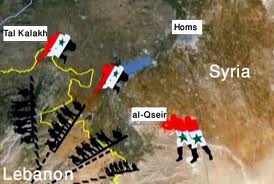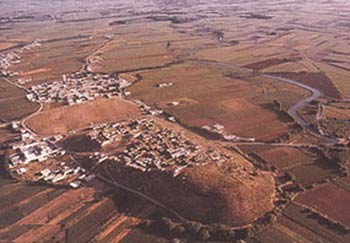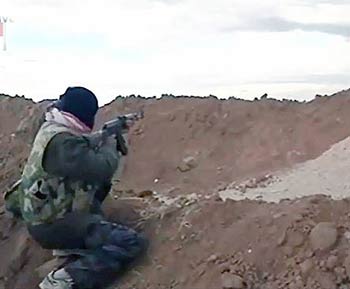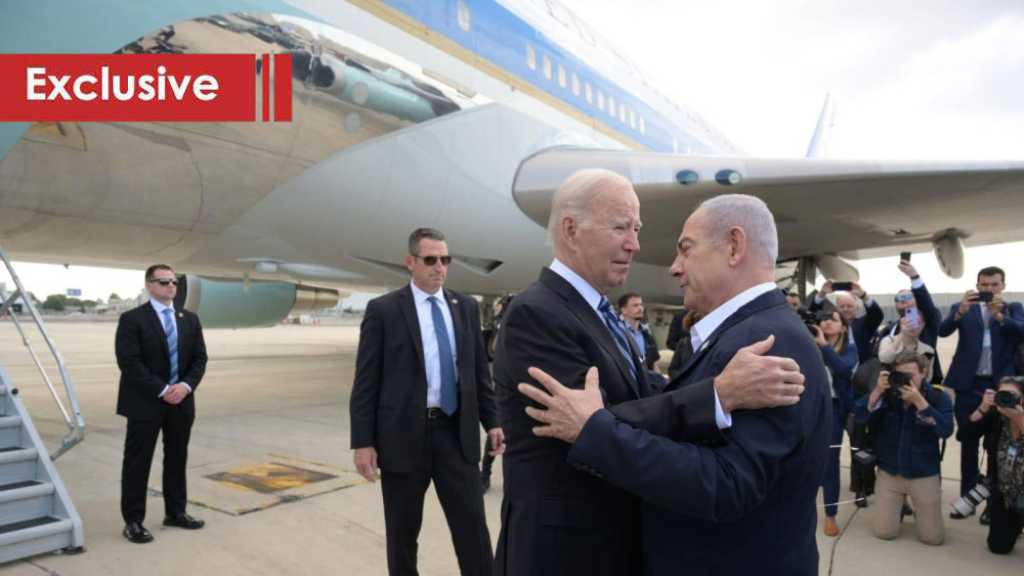
How Al-Qseir Fell under Syrian Army’s Control

Hussein Mortada
This how al-Qseir region fell...
A title that summarizes the battles in the countryside of the western al-Qseir region, after the fall of all demarcation lines that the armed groups created in that area.
 Al-Qseir is considered the demographic and geographic nested corridor between the middle of Syria and the Lebanese-Hermel region.
Al-Qseir is considered the demographic and geographic nested corridor between the middle of Syria and the Lebanese-Hermel region.
The broad region in terms of space, is a plain area with extended edges. It is also punctuated by strategic hill in the western countryside called Prophet Mando's hill, and the so-called Barrier "14" in the eastern rural area of al-Qseir that oversees the José border crossing.
The army surprisingly launched a cleansing campaign to the rural areas of the Western al-Qseir region, that were under the control of al-Nusra Front and the armed groups.
The surprising operation had specific goals. The vanguards of the Syrian army began to flood towards al-Qseir from the Homs- Damascus highway, that links the capital Damascus to the Syrian coast cities of Tartous and Banias and Jableh and Latakia.
Columns of infantry troops led by engineering units began to dismantle improvised explosive devices at the entrances of the villages and towns. Then, the troops entered, adopting new tactics, away from the classic ways accredited by regular armies.
In details, they relied on the Special Unit's swift and rapid strikes, which dealt with each goal individually and separately from the other.
The Syrian Army's control operations started particularly when the units cleansed Abl village i.e. near the International Damascus-Homs highway. In a speedy and swift operation, the army succeeded in entering the town despite the powerful fortifications built by al-Nusra Front.
 This progress formed the entrance to the army's movement towards the Western and Southern country sides of al-Qseir since the village is linked to both al-Qseir and the Lebanese borders, particularly Arsal area which has become an advanced base for supplying the militants in the region with weapons and insurgents.
This progress formed the entrance to the army's movement towards the Western and Southern country sides of al-Qseir since the village is linked to both al-Qseir and the Lebanese borders, particularly Arsal area which has become an advanced base for supplying the militants in the region with weapons and insurgents.
From Abl, the Syrian Army moved to the strategic Prophet Mando's Hill, that oversees the countryside of al-Qseir.
The field's rules stated that the side that controls Prophet Mando's Hill is to impose its conditions and as well as the battle's rhythm. And this what happened, when the Syrian army controlled the region.
The Syrian army advanced in a well-rhythmic manner, and the movement of the troops was highly coordinated so that the units entered the villages and towns in the Western and Southern country sides of al-Qseir, respectively.
The surprise element was the most prominent in the battle, especially as the tactics of the army wasn't classical this time.
The armed groups thought that the battle will begin with the entrance of the Syrian army's armored vehicles. Thus, the militants resorted to booby-trapping and mining the roads leading to the villages.
 However, the army units- led by the engineering units- entered under heavy fire cover. They dismantled the mines, opening the way to the Special Units. This led to the total confusion among the armed groups' militants.
However, the army units- led by the engineering units- entered under heavy fire cover. They dismantled the mines, opening the way to the Special Units. This led to the total confusion among the armed groups' militants.
The outcome of the battle was: al-Qseir region, the West of the Orontes River, became under the control of the Syrian army. They Syrian army managed to cut off roads of supply lines and smuggling of militants from the Lebanese territory, both from the Bekaa and North Lebanon.
This comes as the army continued to siege the armed groups in the region, which was the central point in the flow of arms and insurgents towards the central Syrian regions.
Meanwhile, the Syrian army continues to regain control of the east side of the Orontes River, preventing al-Qseir fighters from reaching the city of Homs and the Northern Damascus regions.
It is worth mentioning that the militants had tried to expel the people of these villages, in an attempt to turn into al-Nusra Front's camps, given that the region extends to the Lebanese Jose and al-Qaa region.
Those strategic points resembled a point of concentration for the armed groups [training the insurgents and treating the wounded before being transferred to Syria through illegal crossings, extending all along the East Lebanese Mountain to reach Tel Kalakh].
It is worth mentioning that that Syrian Army's morale is very high, due to the success of the plans and the precise and thoughtful achievement of the operation as well as the careful coordination between the army units.
In conclusion, al-Qsseir's battle is one of the most strategic operation that the Syrian Army performed in parallel to cleansing Damascus country sides as well as south and east of Aleppo.
Source:al-Ahed news, Translated and Edited by moqawama.org



